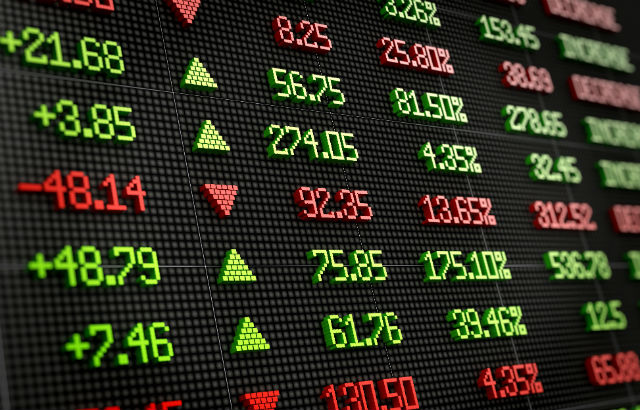Exploring extreme movements in stock market option prices
A new study co-authored by researchers at Queen Mary University of London has found that extreme movements in option prices are not associated with the content of news announcements per se.

The research investigated the characteristics and determinants of jumps in option prices for the first time.
Trading options, where the underlying asset tracks a market wide index, is popular among investors. Any wild fluctuation of index option prices (termed jumps) may result in significant profits, as well as losses, for option investors, and it may affect the liquidity of option markets. As a result, investors and policy makers are very much interested in knowing what causes such extreme movements.
Exploring why option prices jump
Using intra-day data on E-mini S&P 500 futures options, this research first tested whether option prices jump, and whether these jumps occur simultaneously in option prices trading across strikes and maturities.
E-mini S&P 500 futures options and their underlying (E-mini S&P 500 futures) are vastly popular. They trade on an electronic platform, termed GLOBEX, which operates nearly 24-hour a day. This enables traders to act on news and events, as they occur.
On November 9, 2016, there was a sharp overnight sell-off of E-mini futures, with their trading volume reaching approximately 2.3 million contracts. This increase in volume was commonly attributed to the results from the U.S. elections, which were indicating that Donald Trump had prevailed.
The research found that option prices jump; the jump can be sizable, especially for the short-term options, with the probability of a jump occurring being less than 1 per cent, across strikes and maturities.
The research also found that, on average, jumps are synonymous with big decreases rather than increases in option prices. Interestingly, the prices of options with different strikes and maturities, do not jump simultaneously. This may be due to the fact that the E-mini S&P 500 futures options market is populated by traders with different objectives.
Underlying asset price jumps
The study further examined various potential triggers of option price jumps, namely jumps in the underlying asset market (E-mini S&P 500 futures), scheduled macroeconomic news announcements (e.g., release of unemployment, inflation, industrial production figures, or the decisions of the Federal Open Market Committee meetings), and shrinking option market liquidity. It found that option price jumps are mostly unrelated to underlying asset price jumps, suggesting that the dynamics of the underlying asset price and option prices differ.
A fraction of option price jumps clusters around scheduled macroeconomic news announcements. Nevertheless, it is not the content of the release, but rather the option’s market illiquidity that drives these jumps.
The results of the research imply that the extreme movements in the prices of studied options manifest that option market makers increase the spread between the price at which they are willing to buy and the price they are willing sell, to protect themselves, in the event they may trade with a skilled investor. Such an investor, will not necessarily possess information that the option trader does not, yet she may be able to process released information in a better way than the option market maker will.
Professor George Skiadopoulos from Queen Mary’s School of Economics and Finance said: “Our research sheds light for the first time on the magnitude of extreme movements of index options, which trade in a highly liquid electronic option market, such as the 24-hour E-mini S&P 500 futures options GLOBEX market.
“Thanks to the results of our research, we now know that these extreme movements can be sizable, they are not associated with extreme movements in their underlying asset, and they are not associated with the content of the scheduled news announcements, per se. Rather, option market makers increase their bid-ask spreads prior to these announcements, in the fear that they may trade against someone, who has better skills in processing the content of the announcement, once this is released.”
More information
- Research paper: Jumps in Option Prices and Their Determinants: Real-time Evidence from the E-mini S&P 500 Options Market, by Professor George Kapetanios (King’s College London), Dr. Eirini Konstantinidi (Alliance Manchester Business School), Dr. Michael Neumann (Independent), and George Skiadopoulos (Queen Mary University of London and University of Piraeus) is a publication in the Journal of Financial Markets and is available here
- Study Economics and Finance at Queen Mary.
Related items
For media information, contact:
